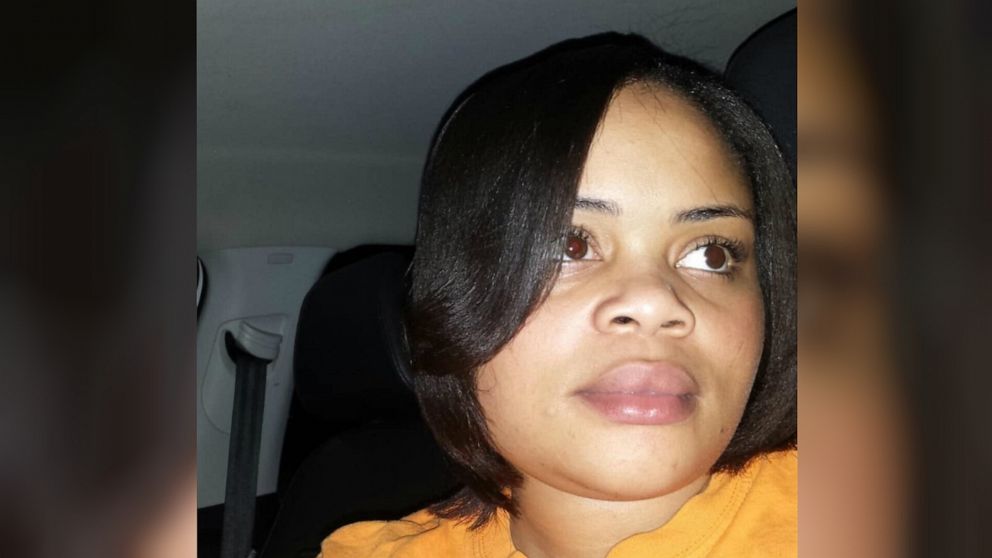'Egregious': Medical alerts, tripped alarms and open doors have all gotten people killed by police at their homes
Dick Tench dozed off in his easy chair at his Simpsonville, South Carolina, home on June 14 while watching TV in his den. His wife had already gone to bed and his mother-in-law, who was battling cancer, was asleep upstairs when a medical alert on her cellphone accidentally went off.
He could not have imagined what would happen next.
About midnight, he was startled from sleep to find the beam of a flashlight bouncing off his walls, he said. Fearing a prowler was trying to break into his home, or worse, was already inside, Tench, the holder of a concealed carry permit, grabbed a pistol from a desk drawer and went to investigate.
As he tiptoed into his foyer, gunshots erupted and he was hit three times by bullets fired through a window next to his front door. He says he thought the man charging into his home was poised to finish the job.
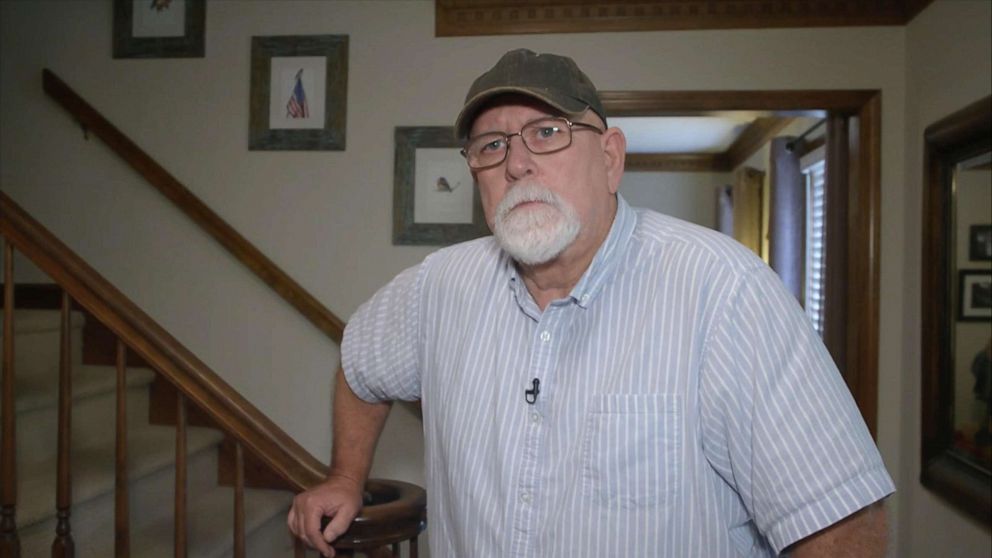
"Don't f------ do it!" Tench said he screamed at the gunman, frightened that he was going to bleed to death. "Oh, my God, call the cops, please."
The man who shot him responded, "I am the cops," Tench said.
This nightmare scenario -- being shot by the police in the sanctity of your own home -- has played out some two dozen times in cities and towns across the country over the past eight years, mainly in the South, according to a review by ABC News. Some of the highest-profile incidents may have had a racial component, even if implicit, and sparked massive protests. Advocates say those incidents with a racial component may be a manifestation of the bias some officers carry against minorities.
But race isn't the only potential factor. Tench, for instance, is white, and a number of the victims were former military.
Experts say it comes down to inconsistent recruitment and training -- for 700,000 officers across some 18,500 departments -- and tragic mistakes, including showing up at the wrong house and not properly announcing as police. Beyond the cost of life, those mistakes have been costly for the municipalities involved in some cases, with multimillion-dollar settlements. And while most of the officers have been cleared of wrongdoing, some have faced criminal charges, including murder.
Such shootings recently garnered headlines after Atatiana Jefferson, a 28-year-old African American woman, was shot to death in her Fort Worth, Texas, home in front of her 8-year-old nephew by a white police officer who opened fire through her bedroom window.
The officer, Aaron Dean, who resigned from his job and was arrested and charged with murder, was one of two cops who responded to Jefferson's address after a concerned neighbor called a non-emergency line to request a welfare check when he noticed Jefferson's front door wide open at 2:30 a.m. Dean has not entered a plea and his attorneys have not commented due to a gag order.
'Brings tears to my eyes'
For the first time since he was shot in the back, chest, and groin, Tench spoke out to ABC News' "Nightline," spurred on by Jefferson's shooting.
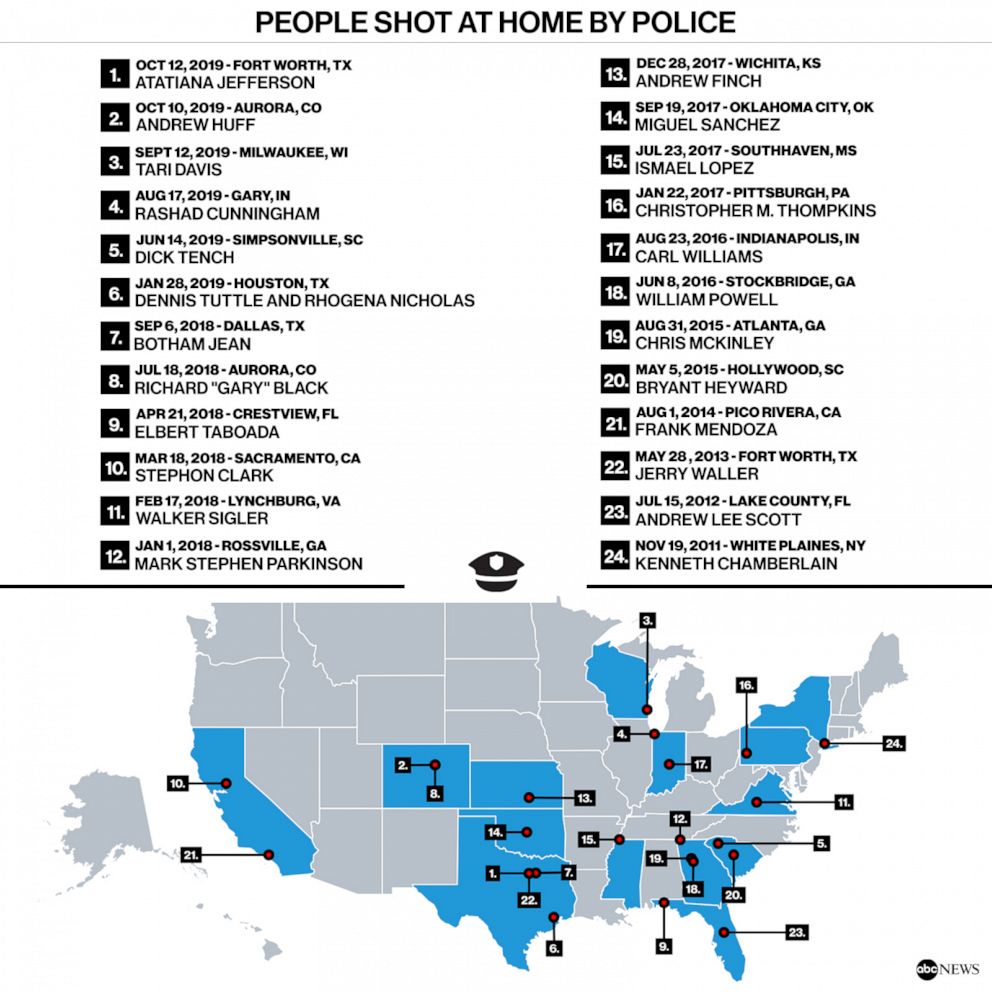
"My family, the Tench family, our hearts and prayers go out to the Jefferson family in Fort Worth. I know what we went through in the last four months and it's been absolutely horrendous, but it's nothing compared to what they're going to go through. It brings tears to my eyes," Tench said.
As in Tench's case, Jefferson was frightened by a commotion outside her home, according to the arrest warrant issued for Dean that cited a statement Jefferson's nephew gave investigators. The boy said his aunt, who also had a concealed carry permit, retrieved her pistol from her purse and was killed when she went to a bedroom window and peered out into her darkened backyard, according to the report.
It just seems crazy that an officer gets called out on a medical alert and the homeowner, a 62-year American, law-abiding citizen gets shot in his own home. It just doesn't make sense
The shootings of Tench and Jefferson were both captured on police body-camera videos that were made public by police officials.

Tench says the deputy who shot him never announced himself as law enforcement before he opened fire. In Jefferson's case, the officer failed to identify himself as police and shot her less than a second after screaming, "Put your hands up. Show me your hands," according to police officials.
"I don't know what their training is," Tench said in the "Nightline" interview. "I just know that if an officer is sent out to a house on a medical alert or a wellness alert, I'm not sure having guns blazing would be protocol."
25 people shot at home by U.S. police
Since 2011, at least 25 people across the country have been killed or severely wounded in 24 incidents occurring in their homes, in most cases by law enforcement officers who wind up at the victims' homes for welfare checks, burglar alarms, open doors, by mistake or for 911 calls from citizens truly in need of help, a review by ABC News shows.
Such incidents represent a fraction of the tens of millions of interactions with police that U.S. residents have each year, including about 1 million threats or use-of-force encounters, according to the Bureau of Justice Statistics, as well as the hundreds of people killed each year in police-involved shootings.
Calls to houses are also extremely dangerous for officers -- especially those involving domestic violence. Earlier this year in Sacramento, Officer Tara O'Sullivan was shot and killed responding to such a call.
And in 2018, some of the 55 officers feloniously killed were attacked responding to calls to homes, including in Kentucky, where Pikeville Police Officer Scotty Hamilton was shot in the head during an ambush following a call for a suspicious person. In New York, a state trooper was fatally shot during a welfare check for a man threatening to shoot himself, the FBI said.
Incidents where residents are shot in their own homes by police do not appear to be tracked by federal or local agencies, making it difficult to determine how many occur annually. This year, the FBI started collecting data for a national use-of-force database, but that information is not yet available.
I knew it was going to happen again
Jefferson's death came about a week after a now former Dallas police officer, Amber Guyger, was sentenced to 10 years in prison for the Sept. 6, 2018, murder of Botham Jean, a 26-year-old churchgoing accountant from St. Lucia who was shot and killed in his apartment.
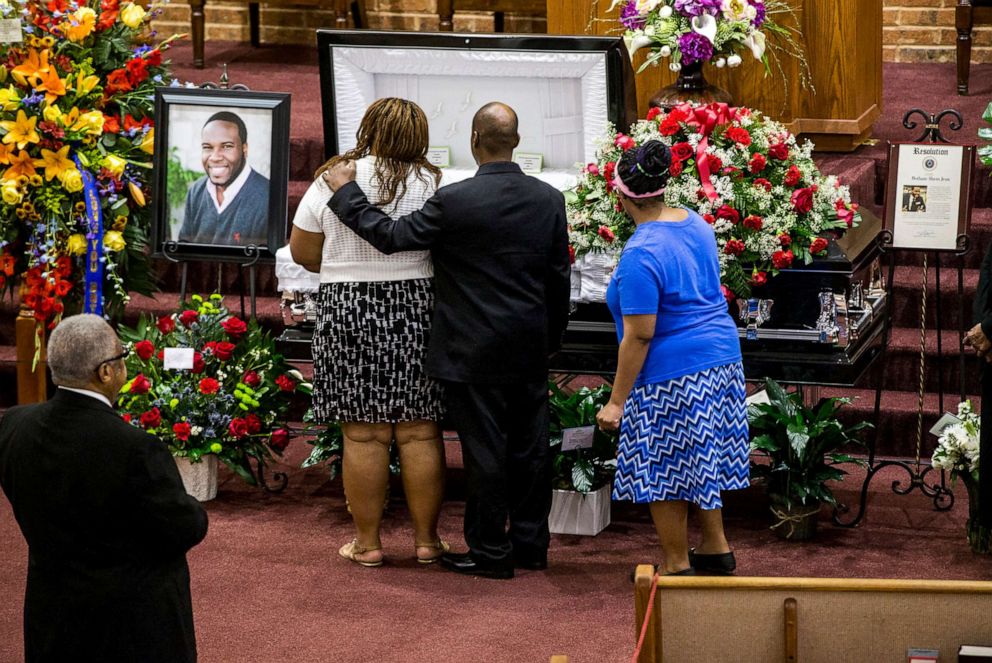
Jean was on his couch eating ice cream when the officer, who had just finished an overtime shift helping to bust a group of armed-robbery suspects, charged through his unlocked door and shot him. During her trial, Guyger testified that she mistook the apartment for her own and believed Jean was an intruder bent on killing her.
Tench's case is similar to that of Kenneth Chamberlain Sr., 68, who was shot to death in his White Plains, New York, home on Nov. 19, 2011, by police who responded to a welfare check after his medical alert device accidentally went off, according to a Department of Justice investigation.
Chamberlain, according to the investigation report, refused to open the door and told officers he didn't need help. Instead of leaving, the officers broke down his door and he confronted them brandishing a kitchen knife. Officers deployed a stun-gun and bean-bag gun on the retired Marine, before shooting him to death.
As with the officer who shot Tench, those involved in Chamberlain's death were cleared of wrongdoing. A federal jury in 2016 rejected a $20 million wrongful-death lawsuit filed by Chamberlain's loved ones.
Following the death of Jefferson -- a graduate of Xavier University of Louisiana, who put her career on hold to return home and help her sick mother and sister -- Fort Worth Police Chief Ed Kraus joined the city's mayor and city manager in a chorus of apologies to the community and vowed to work so that a similar tragedy never happens again. In a news conference announcing Dean's arrest, Kraus pleaded with the public, particularly protesters who took to the streets of Forth Worth to demand justice for Jefferson, to "please do not let the actions of one officer reflect on the other 1,700."
Another tragedy in Forth Worth
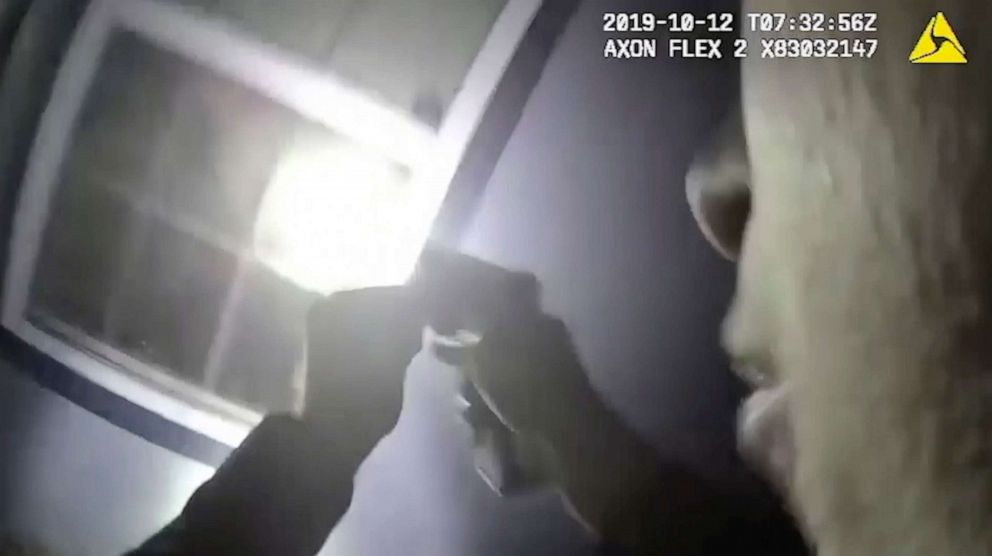
The contrition expressed by Fort Worth city leaders sounded all too familiar to attorney Art Brender, who represents the family of Jerry Waller, a 72-year-old homeowner shot to death in his own garage by a Fort Worth police officer who went to the wrong address to investigate a tripped burglar alarm.
"I knew it was going to happen again," Brender told ABC News.
Brender said the Waller case is "very similar in some respects to the police shooting that tragically took the life of Atatiana Jefferson."
It was just after 1 a.m. on May 23, 2013, when Waller and his wife, Kathy, were awakened to their dog barking and noticed flashing lights outside their home, according to Brender. Waller initially thought his car alarm had gone off and went to his garage to check, Brender said.
As soon as Waller opened his garage door from inside, a rookie officer opened fire six times killing him, according to a lawsuit filed by his family. Brender contends neither the officer, nor his partner, identified themselves as police before shooting Waller, a scenario the Fort Worth City Attorney disputes.
The officer claimed he saw Waller with a weapon and shouted "Drop the gun! Drop the gun!" according to a police report. He claimed Waller laid the gun on the hood of a car in his garage, but then "scrambled" to pick it back up and took a shooting stance, forcing him to open fire, according to the police report. While police said a gun was found under his body, Waller’s lawyer is contesting whether he actually had a weapon, suggesting the pistol was planted.
The Tarrant County District Attorney's Office presented the case to a grand jury, which declined to file charges against the officer.
In the six years between Waller's death and the shooting of Jefferson, Brender contends the Fort Worth Police Department has done little to prevent similar tragedies from occurring.
"They're too busy defending their poor police work, and they don't want to admit they did anything wrong because they don't want to pay," Brender said.
But in a statement to ABC News, the Fort Worth City Attorney's Office responded that the "the Jefferson case and Waller case are not the same."
City officials say that since the Waller shooting, training for recruits and officers of the Fort Worth Police Department has become far more rigorous than other police departments throughout the state, and arguably the country.
"The Fort Worth Police Department's training standard is higher than the 643-hour minimum set by the Texas Commission on Law Enforcement to become a licensed peace officer," according to the statement from the City Attorney's Office. "A Fort Worth officer, however, receives 1,440 hours of training of which 326 hours are not reported to the state."
Upon graduation from the police academy, new Fort Worth officers are required to undergo 560 hours of field training, which is well above the 160 hours mandated by the state, according to the city. Field training includes 162 hours of instructions on the use of force and the mechanics of arrest, the city says, adding that the state mandates just 64 hours of such training.
In 2017, the Fort Worth Police Department also mandated its officers complete three separate classes on implicit bias, the unconscious act of stereotyping people based on race, and police practices and theory.
"Since that year, Procedural Justice and de-escalation training have been incorporated in the recruit training for new officers," according to the city's statement to ABC News.
'Horrible chain of events'
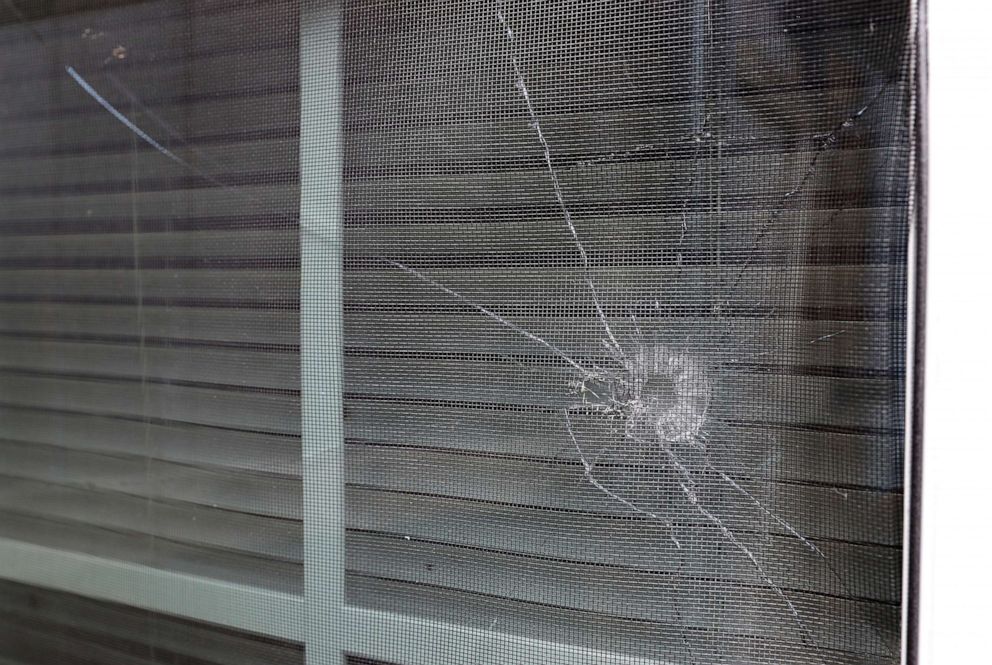
Community activists in Fort Worth and elsewhere say similar police-involved shootings in communities coast to coast have fueled the anger and fear of what a 911 call or, as in the case of Jefferson, a door left open to let in a breeze on a warm night might bring. They include:
-- The shooting of Walker Sigler, 36, who was severely wounded by two Lynchburg, Virginia, police officers who stopped at his home at 1:15 a.m. on Feb. 17, 2018, after noticing the front door cracked open, according to a police report. In the body-camera video, the officers are heard identifying themselves as police, but no one immediately came to the door. The unarmed Sigler's femur was shattered by a bullet when he was startled awake and tried to shut the door after seeing the muzzle of one of the officer's guns, according to police. The two officers involved in the shooting pleaded no contest in March to misdemeanor charges of reckless handling of a firearm. Sigler has filed a $12 million federal lawsuit accusing them of "gross negligence." The case is pending.
-- The shooting of Elbert Taboada, 34, in his Crestview, Florida, home by an officer responding to an open-door call at 2:30 a.m. on April 21, 2018. Taboada, a former Army Green Beret with a concealed carry permit, suffered a bullet wound to the leg when he emerged from his bedroom holding a gun, authorities said. The officer who shot Taboada, whose wife and young children were in the house at the time, was cleared of wrongdoing by the State Attorney's Office for Okaloosa County. Taboada said he grabbed the gun after becoming alarmed by noises that he heard.
-- The death of Mark Stephen Parkinson, 65, who was shot on Jan. 1, 2018, by a police officer who responded to his Rossville, Georgia, home at 3:15 a.m. to investigate a report made by his daughter's mother-in-law that she was threatening to harm her children, police said. The complaint against Parkinson's daughter, who was living with her parents while going through a divorce, was later deemed false, police said. Parkinson, a retired member of the Navy, was shot through his kitchen window by an officer on his porch who saw him holding a gun, police said. A Walker County grand jury cleared the officer of wrongdoing. Parkinson's wife told ABC affiliate WTVC that he grabbed the gun to go check out the noise he heard.
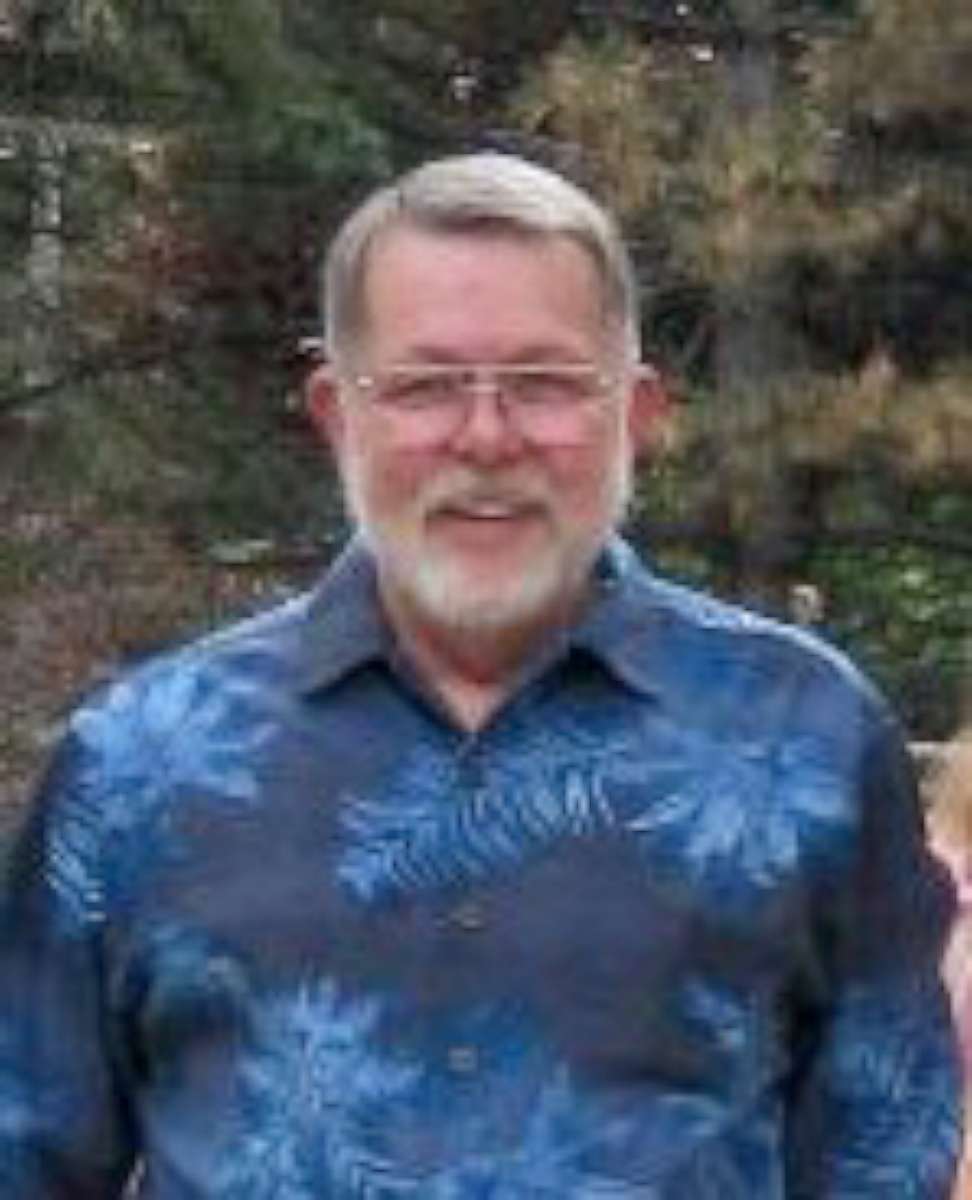
-- The death of Richard "Gary" Black, 73, who was fatally shot in his Aurora, Colorado, home on July 18, 2018, by a police officer who responded to the residence after Black, a Purple Heart and Bronze Star recipient, shot and killed a naked intruder who was assaulting his 11-year-old grandson. Black, a concealed weapons permit holder, was gunned down inside his house after failing to comply with orders to put his weapon down, according to police. Investigators learned from Black's family that the Vietnam War veteran had "a significant hearing impairment" and likely didn't hear the commands. The officer who shot Black was cleared of wrongdoing.
--In January 2019, Dennis Tuttle, 59, and his 58-year-old wife, Rhogena Nicholas, were shot to death in their Houston home when narcotics police executed a no-knock warrant. But within days, police Chief Art Acevedo called a news conference to announce that a narcotics agent, Gerald Goines, 54, who was one of five police officers injured in the incident when Tuttle opened fire on them, had lied on an affidavit to obtain the warrant.
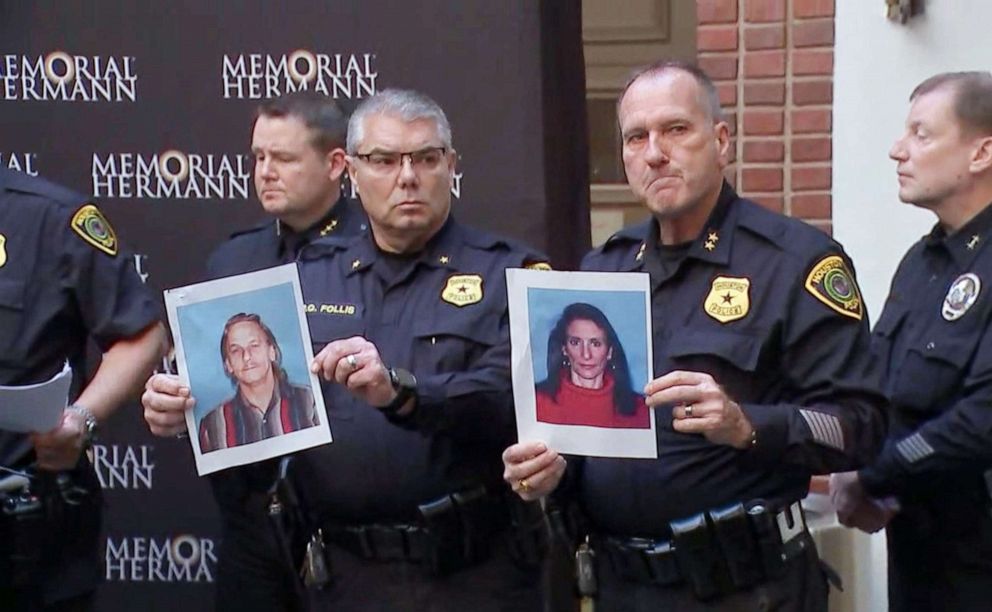
Goines, according to Acevedo, had falsely claimed an informant had purchased tar heroin at the couple's house. In May, Goines was arrested and charged with murder in the case. Another officer, Steven Bryant, who allegedly lied in supplemental paperwork saying he had assisted Goines in a narcotics operation at the house on the day prior to the raid, was charged with one count of tampering with a government record. Goines is free on $150,000 bond, but it was not clear if he entered a plea, according to court records. His attorney could not immediately be reached for comment. Byrant is free on $50,000 bond and it was not clear if he entered a plea per the court records. His attorney could not be immediately reached.
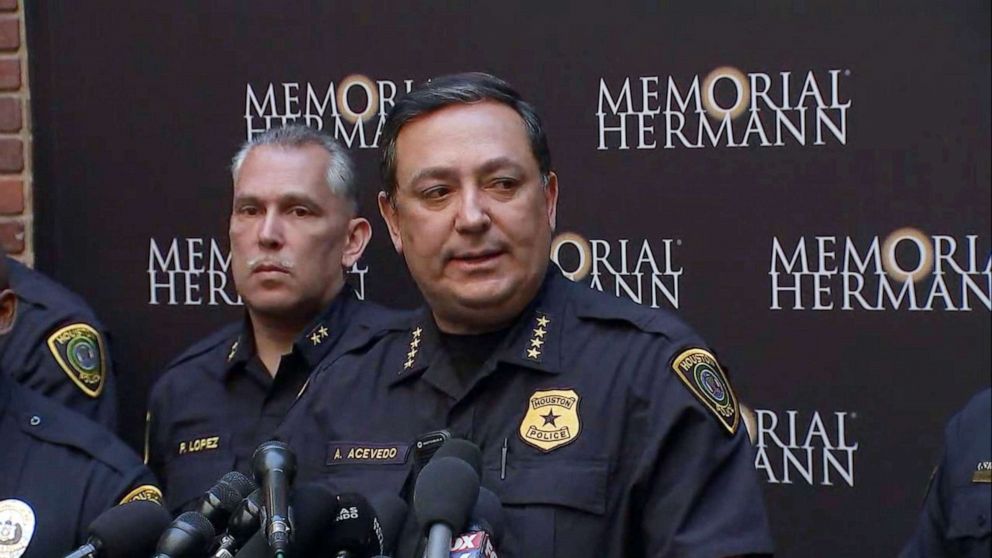
-- Just 15 months after Black's death, an Aurora police officer shot and wounded Andrew Huff, 22, in his home on Oct. 10, 2019. Police went to Huff's home after his roommate complained he was kicked out of the residence and assaulted by Huff, according to an incident report. When officers arrived at the home at 11:30 p.m., they claim Huff ran inside and reappeared in his front window with a shotgun, prompting an officer to open fire through the window, according to the report. Huff, who was shot in the back, told ABC affiliate station KMGH that the officers never identified themselves as police and all he could see is five people dressed in black standing outside his residence. Police dispute Huff's story, saying the officers were in uniform and one even waved at Huff. The incident remains under investigation.
-- Carl Williams, a mailman and retired Air Force veteran, was shot and severely wounded in his Indianapolis home by a police officer when he called 911 for help on Aug. 23, 2016, after his wife was carjacked in front of their house at 4:30 a.m. A responding officer shot Williams, a concealed weapons permit holder, in the stomach when he opened his garage door holding a gun and the cop mistook the then 48-year-old homeowner for the carjacker, according to police. The officer who shot Williams was cleared of wrongdoing.
"The only thing I can remember is intense pain, falling on the ground and telling the police officers, 'I am the homeowner. Why did you shoot me?" Williams said in a 2016 interview with ABC News. "I expect the police to come to help us. I didn't want to take justice in my own hand. That's the wrong thing to do."
Williams filed a federal lawsuit in the Southern District of Indiana in August 2018. While some claims have been dismissed, allegations that his constitutional rights were violated remain pending.
An American problem
Like many African-American community activists, Tari Davis said he feels that black lives appear to be under siege by police in the United States more than any other race and statistics appear to bolster that contention. Davis said he was shot without warning when police fired at a suspect through his open back door in Milwaukee. The officer in the case, which remains open, has been placed on administrative leave.
"I truly believe that the police should be held at a higher standard. I truly believe that an officer's job is to serve and protect. It's not their job to be judge, jury, and executioner," said Davis, who has filed a lawsuit against the police department accusing its officers of "negligence." The Milwaukee police department said in a statement on Sept. 8 that the officer in the case was put on administrative duty and that the homicide division would be investigating the use of force.
Of the incidents examined for this article by ABC News, eight people shot in their homes by police were black, while 13 were white and four were Hispanic. Despite the low number of incidents, blacks are overrepresented (32%) compared to being 13 percent of the population.
Atatiana Jefferson's death came on the heels of six fatal police-involved shootings in Fort Worth since June 1. Three of those killed by Forth Worth police were black, including a 20-year-old man who was allegedly armed and wanted on assault charges, an armed 19-year-old man who was allegedly hiding in a closet and using two children as human shields, and an armed 18-year-old man who was named as a "person of interest" in a homicide.
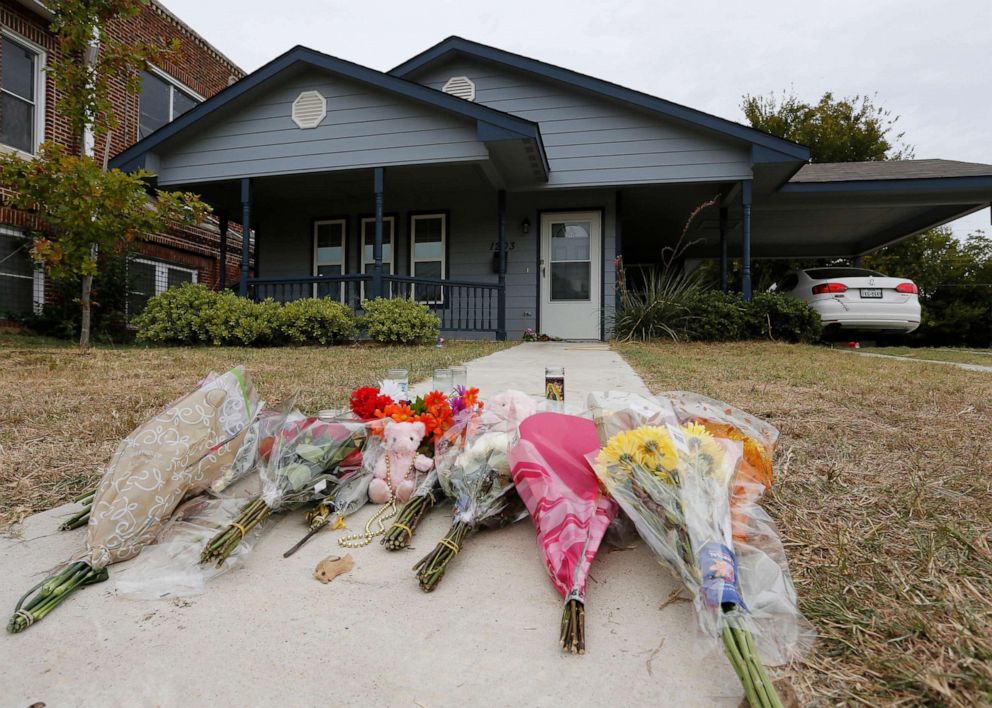
Following Jefferson's shooting, Sherrilyn Ifill, president of the NAACP Legal Defense and Educational Fund, released a statement, saying, “We are deeply saddened and angered at the preventable loss of yet another innocent Black life -- especially in light of the policies that, had they been adhered to, could have prevented the killing of Atatiana Jefferson.” Over the past several years, there have been a number of innocent black men killed in high-profile police-involved shootings.
While enraged community activists and attorneys for Jefferson's family portrayed her shooting as the latest example of police needlessly killing black people in the United States, Dick Tench, the white homeowner shot in South Carolina, said he is a testament of an American problem that isn't exclusive to minorities.
"It just seems crazy that an officer gets called out on a medical alert and the homeowner, a 62-year American, law-abiding citizen gets shot in his own home. It just doesn't make sense," Tench said.
South Carolina attorney Beattie Ashmore, who is representing Tench in an anticipated lawsuit against the Greenville County Sheriff's office, said the primary issue in many of the cases in which law enforcement end up shooting innocent civilians in their own homes boils down to "complete disregard for training, procedures, and protocols."
"So if there's a common thread, as revolting as these scenarios are, I think it's just a basic lack of decent training of officers," Ashmore told ABC News.
Is it a problem with training?
Critics say training is an issue that has arisen in other police use of force scenarios, including how seemingly minor interactions with officers spiral out of control.
One question is the failure rate of police recruits.
"I would say the failure rates are probably not high. I would guess that if you found a failure rate of 4%, I'd be surprised," said Jon Blum, a former North Carolina police officer and vice president of FORCE Concepts, a company that designs and develops training solutions for public safety professionals.
"And the question becomes then, are we doing a good job testing them? I don't know that we're doing an effective job testing. I think we need to do better. There needs to be better testing in place and evaluating," Blum told ABC News.
Blum said that most U.S. police academies, which average six months of training, instruct candidates on "general patrol duties," which include studying best practices for responding to wellness calls, activated burglar alarms and open structures.
"They could spend anywhere from an hour or as many as 20 hours on those procedures," Blum said. "There's no standard for that. There's no standardized training for law enforcement across the country. It's fragmented. There's no consistency in the way we do business and the way we train people."
"In my experience, I have found academies are very reluctant to dismiss students. You spend a lot of time and money hiring somebody and then you put them in the academy. And they're short-staffed," Blum said of law enforcement agencies. "They want to get people out on the street. The agencies need the people out on the street and there's pressure from stakeholders and chiefs and sheriffs, and that can complicate things."
He said in such patrol scenarios as an open door like in the Jefferson case, officers are generally taught to call for back-up and take a "wait-and-see" approach, monitoring the door to make sure no one nefarious comes out.
"Before you go in, you should make an announcement, 'Is anyone in there? This is the police.' You want to communicate in some way, shape or form that somebody is coming in," he said.
He suggested that perhaps the answer is more scenario-based training, as opposed to lectures.
"I could send you curriculum all day long and say here's what officers are trained to do, here's the lesson plan. But the fact of the matter is, did you test them on it? Did you make sure they knew how to do that?" he said. "There needs to be a more hands-on, practical application that allows the people who are doing the training to properly evaluate people on whether or not they can make the decisions."
Andrew J. Scott III, the former police chief of Boca Raton, Florida, told ABC News that most police departments in the country require officers to do use-of-force training on either an annual or semi-annual basis.
"That use of force training involves firearms training, but also a review of policies and should consider reviewing U.S. Supreme Court cases related to use of force," said Scott, now president of AJS Consulting who frequently provides expert witness testimony on police practices and procedures at trials where such issues are scrutinized.
Citing his 30 years in law enforcement, Scott said it is "not usual" for police to shoot people in their own homes absent an imminent threat of death or great bodily harm. But when such incidents do occur, he said it's imperative for the police agency involved to be transparent and for the public to be patient.
"The agency clearly has to assess what went right, what went wrong ... and then identify those issues and bring them to the public's attention and a plan of action to correct this," Scott said. "I would imagine that the police department and the police chief are making a detailed after-action assessment of why this occurred, changing what needs to be changed immediately to prevent this from happening again.
"Police officers are human," Scott said. "They make mistakes and sometimes the mistakes are tragic."
An 'extremely decentralized' U.S. police force
The shooting of Stephon Clark in Sacramento prompted legislation signed into law in August by California Gov. Gavin Newsom, who hailed it as "one of the strongest use-of-force laws in the country." The law, which will go into effect on Jan. 1, will require officers to only "use deadly force when necessary."
Clark, 22, was shot seven times in his grandmother's backyard by officers who mistook the cellphone in his hand for a gun. Police officials contend they chased Clark into the yard, suspecting he was responsible for breaking car windows in the neighborhood. In September, the city of Sacramento, California, agreed to pay Clark's two young sons $2.4 million to settle a wrongful-death lawsuit.
The law will also require officers to exhaust other techniques to address threats "when safe to do so," and encourage law enforcement to train on and use de-escalation techniques "like verbal persuasion and other crisis intervention methods."
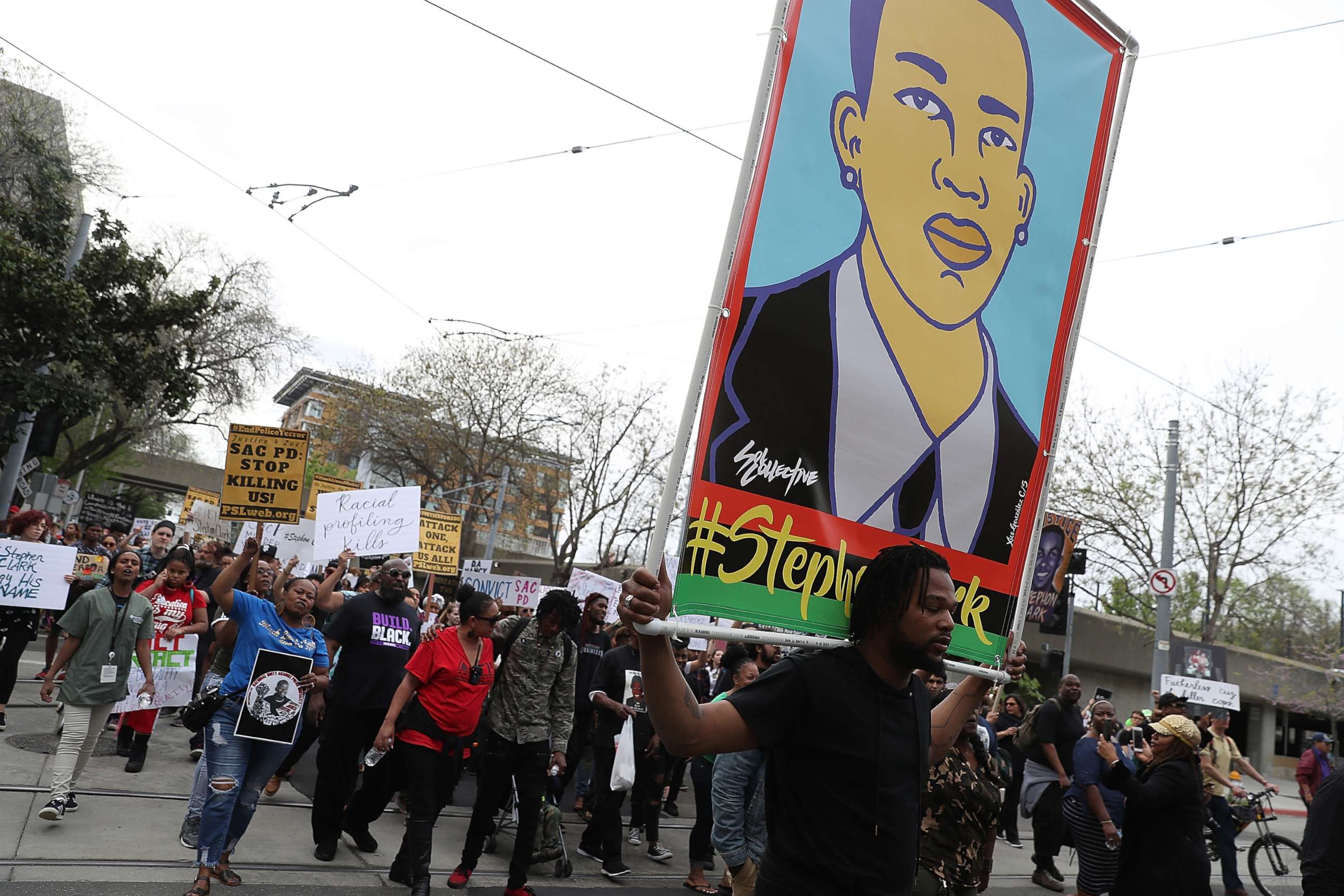
But John DeCarlo, the retired police chief of Branford, Connecticut, told ABC News that, generally, information gleaned from such tragedies are rarely shared with departments across the country.
"Number one, we're dealing with millions of police-citizen contacts a year. There are about 700,000 cops in the United States and those cops work in an extremely decentralized environment. In other words, those 700,000 cops work in about 18,500 police departments," DeCarlo, now chairman of the Department of Criminal Justice at the University of New Haven's Henry C. Lee College of Criminal Justice and Forensic Sciences.
He said countries such as France, Spain, Italy, and Colombia have one national police department, and police forces in Great Britain operate under 45 centralized law enforcement jurisdictions.
"In the United States, because we live in a federalized democracy, we enjoy the duel-edged sword that is home rule," DeCarlo said. "It often astounds me when people say, 'Each police department has to look like their community.' In fact, they look almost too much like their communities. Because they're so decentralized there is no way to promulgate training, education, and policy across the entire United States."
"Until we change the way police train and how we educate them and hold them accountable, chances are we're going to keep making the same kind of mistakes because we don't have the ability to change system error."
Such a pronouncement is cold comfort for victims like Tench.
"It's egregious," Tench told "Nightline" of the incidents in which innocent people like him have been shot in their homes. Tench said he's concluded from his own experience that police across the country need to reevaluate their policies and procedures.
He said before he was shot, he "100% supported the blue."
"Now, I'm not so sure," he said. "Now, I'm actually scared."
ABC News' Cho Park and Karma Allen contributed to this report.
